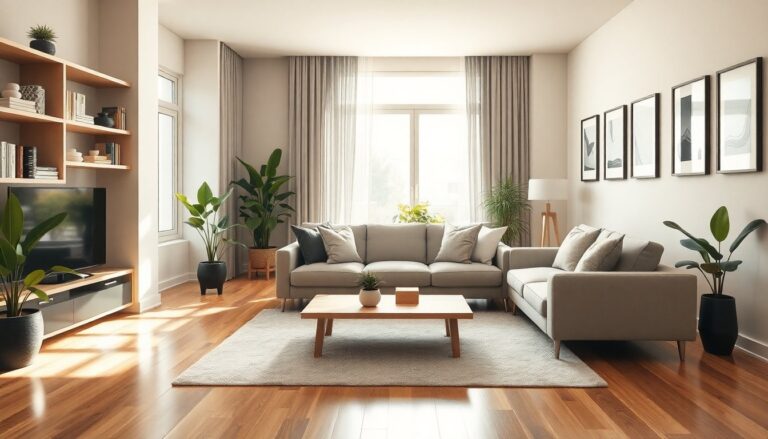Investing in interior design has become a crucial element of any renovation process. Each decision, whether significant or minor, contributes to creating an environment that reflects aesthetic preferences while maximizing functionality and comfort. In a time when visual perception is vital, understanding design dynamics is essential for anyone aiming to transform
their space. The evidence is clear: well-designed homes not only attract more visitors but can also significantly increase property value.
Emerging Trends in Interior Design
In the current renovation landscape, interior design choices must be made with a clear strategy. Investments in this area go beyond visual appeal; they must also address the practical needs of the spaces involved. For example, optimizing workspace through targeted design
can enhance productivity and user well-being. This principle applies equally to residential environments, where a thoughtful arrangement of furniture and strategic use of color can profoundly influence the overall atmosphere.
Another essential factor is lighting. The role of light in shaping our perception of spaces and our feelings cannot be overstated. Investing in appropriate lighting systems not only elevates aesthetics but also positively impacts psychological well-being. Utilizing natural
light whenever possible and incorporating well-placed artificial light sources can transform even the darkest corners of a home into inviting spaces.
Analyzing Market Trends for Informed Design Decisions
To make informed decisions in interior design, it is essential to analyze data related to market trends and consumer behavior. Statistics show that strategic design investments can lead to increased property values. In-depth analyses have revealed that homes with thoughtful design can sell for up to 20% more than their poorly designed counterparts. Monitoring key performance indicators (KPIs), such as average sale time and buyer interest rates, provides valuable insights into how design choices affect the market.
Employing attribution models to analyze which design elements appeal most to buyers is crucial. This approach enables a deeper understanding of which aspects to emphasize during the renovation process. If data indicates that open and bright spaces are in high demand, it is imperative to design areas that reflect these preferences.
Practical Implementation of Design Strategies
Once strategic choices are understood and data analyzed, the focus must shift to practical implementation. Detailed planning is essential to ensure a smooth renovation process. Developing a work plan that outlines the renovation phases, including timelines and estimated costs, is a vital step. In this context, selecting the right suppliers and maintaining effective communication with design professionals can make all the difference.
Monitoring KPIs during the implementation phase is critical. Tracking return on advertising spend (ROAS) can help evaluate the effectiveness of advertising expenditures related to the project. Additionally, gathering feedback from end-users is vital, as their experiences can provide invaluable insights for future optimizations.
Long-Term Strategies for Successful Interior Design
Investing in interior design transcends aesthetic considerations; it represents a long-term strategy that demands attention and careful planning. By consistently monitoring performance and analyzing data, it is possible to refine design choices and optimize spaces effectively. It is crucial to remember that marketing today is a science: data-driven insights lead to more informed and conscious decisions, transforming every renovation into a growth and innovation opportunity.

